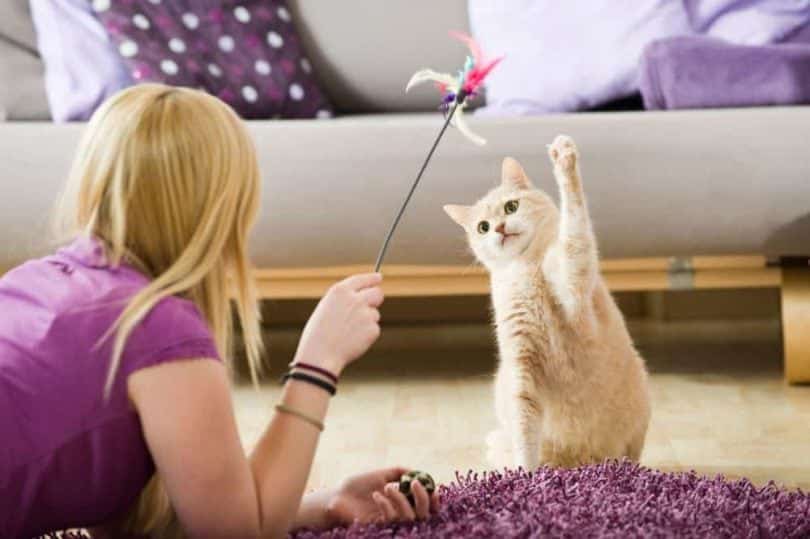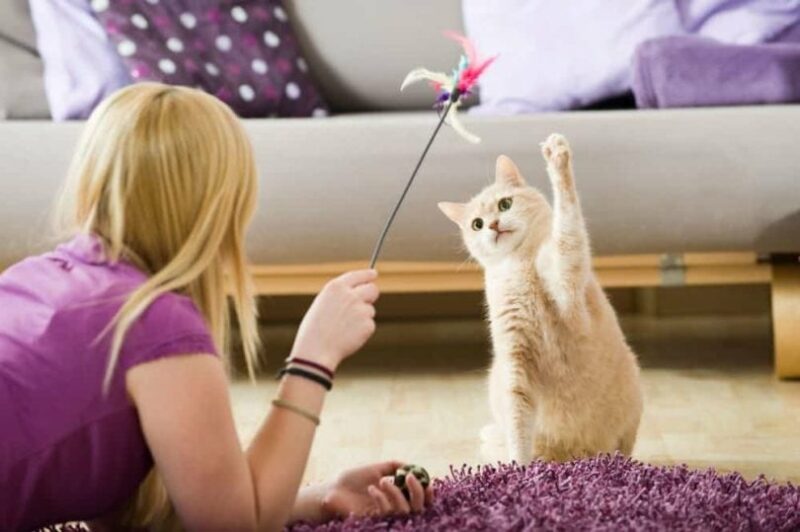Cats need exercise in order to be at their happiest and healthiest. That’s a fact that we’re sure you know if you’re a cat owner, however, you may not always know how long you should be playing with them or even how to play with them properly. Fret not, that’s where we come in.
In general, you should play with your cats for around 40 minutes per day, but some cats may need more or less playtime. In this article, we’ll look at the importance of playing with your cats as well as how you can play with them to make sure that they stay engaged, happy, and healthy.
Why Playing With Your Cat Is Important
Playing with cats has many benefits for their mental and physical well-being, but it can benefit you as well. Let’s look at some reasons why playing with your cat is important.
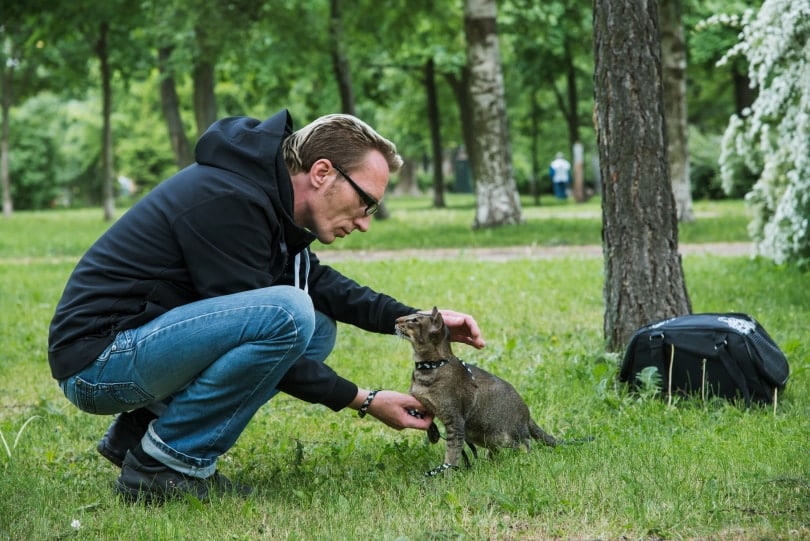
Exercise
The first reason why playing with your cat is important is because play helps them get exercise. Exercise is important for all animals because it helps them maintain a healthy and active lifestyle, including maintaining a healthy weight. But this is super important for cats because it’s estimated that up to 35% of the feline population is obese, and half of cats between ages 5 and 11 are either overweight or obese.
Being overweight or obese can lead to several serious health issues in your cat.
- Cancer
- Diabetes
- Heart disease
- Hypertension (High Blood Pressure)
- Lower immunity
- Skin problems
Being overweight can also lower your cat’s life expectancy.
Stress Relief
Another reason why playing with your cat is important is that it helps your cat to relieve stress. Stress in cats can be caused by a variety of factors, including:
- Territory issues
- Other animals in the home
- A new baby/person in the home
- Changes in their normal routine
Being stressed can also lead to spraying, problems using the litter box, or other health conditions. But playtime is a way for your cat to relieve some of that stress.
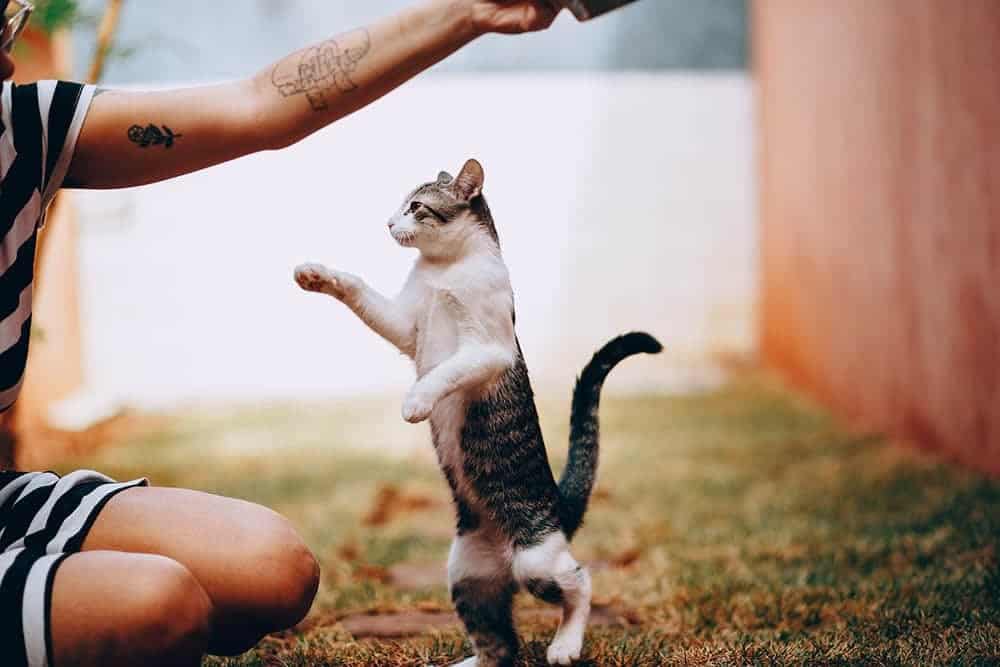
Reduce Boredom
The third reason you should play with your cat is to keep them entertained and prevent boredom. Even the laziest of cats can get bored sometimes, which can lead to playing with things around the home that you wouldn’t want your cat to play with. You can help relieve boredom by playing with your cat so that he stays stimulated instead of getting into things at home.
Bonding
Finally, playing with your cat is important because it can help the two of you form a stronger bond. If you play with your cat, you’re giving your cat attention, and they’ll be more willing to sit with you, let you pet or brush him, etc. Having a strong bond with your cat can reduce stress and anxiety in you as well.
How Long Should You Play With Your Cat?
There are mixed opinions about this, but most professionals seem to agree that cats need between 20 and 60 minutes of playtime per day. In general, 40 minutes of playtime should be suitable for most adult cats, but younger or older cats may need more or less depending on their energy level. Also, cats that stay indoors will generally need more exercise than cats that go outdoors.
With that being said, we all have busy lives, and between working, taking care of things around the house, and sleeping, we don’t always have time to play with our cats. You can break up playtime in a way that fits your schedule. You can do four 10-minute sessions, two 20-minute sessions, etc., and shorter play sessions are actually better for your cat because they usually only get playful in short bursts anyway.
It’s also worth noting that if you can’t play with your cat one day, that’s okay. However, it’s important that your cat has plenty of toys to play with to keep themselves entertained when you can’t play with them.
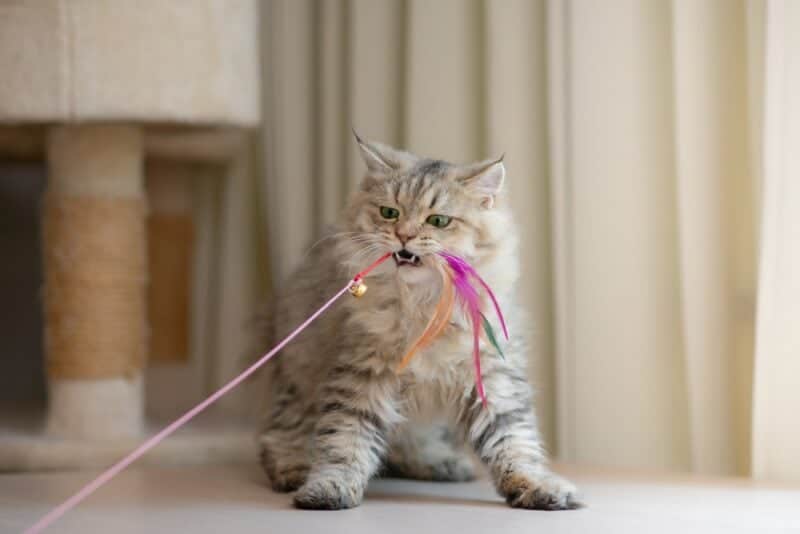
How to Play With Your Cat
All cats are different and what one cat likes to play with, another cat may not. And some cats may like to play more “lazily,” while some cats are always super active and energetic. You may have to experiment with a variety of different toys to find one your cat likes that also matches his energy level.
For example, active cats may prefer a toy that can chase around the house, such as a remote-controlled or battery-operated mouse. Plus, these toys allow your cat to practice his hunting skills as well. But some cats may like a simpler feather wand that you can hold and they can just bat at.
Remember that even if you can’t play with your cat often, you at least need to have toys that your cat can play with when you’re not around. Having toys that he can bat around or cat trees with hanging toys that allow him to jump or climb can help keep your cat entertained while you’re not at home. Puzzle feeders also provide great solo entertainment for your cat.
Playing is an important part of keeping your cat mentally and physically engaged, and a great toy will make it much easier. We like Hepper's Catnip Stick Toys because they're sturdy enough to handle intense play and completely filled with organic catnip. You'll love the fun range of pastel colors and your cat will enjoy the prey-like shape!
At Catster, we’ve admired Hepper for many years and decided to take a controlling ownership interest so that we could benefit from the outstanding designs of this cool cat company!
What if Your Cat Is Overweight or Has a Medical Condition?
Having a cat that is overweight or that has another medical condition is one instance in which you may not need to exercise with your cat for the full 40 minutes. But even cats that have a medical condition still need exercise, and exercise can actually help their medical condition as long as they don’t overdo it. They just may not be able to exercise as much or for as long as healthy adult cats.
This is a case in which you need to consult with your vet about how much and what type of exercise is appropriate for your cat, depending on his medical condition. You don’t want to overwork your cat, which can worsen some conditions. And you want to watch your cat closely during playtime for anything out of the ordinary, such as rapid breathing or struggling to breathe, and take a break, if necessary.
Final Thoughts
Playtime is an essential part of caring for a cat, and both your cat and you will benefit from playing with your cat. Playtime can help increase bonding between the two of you, but it can also provide your cat with exercise, entertainment, and stress relief. Around 40 minutes of exercise per day, broken up into smaller sessions, is enough for a cat, but even if you can’t play with them for a full 40 minutes every day, make sure they have suitable toys that they can play with by themselves as well.
Featured Image Credit: Dora Zett, Shutterstock

